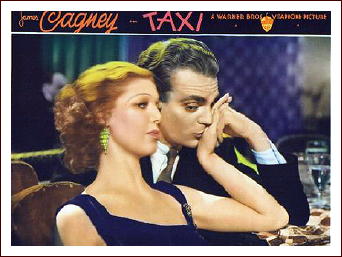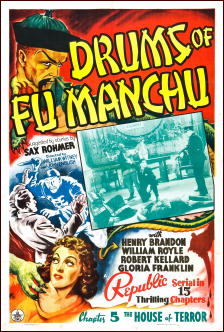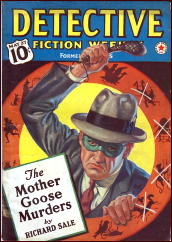November 2011
Monthly Archive
Wed 16 Nov 2011
REVIEWED BY MICHAEL SHONK:

COVERT AFFAIRS. USA Network. Premiered July 13, 2010. Created by Chris Ord and Matt Corman. Cast: Piper Perabo as Annie, Christopher Gorham as Auggie, Kari Matchett as Joan, Peter Gallagher as Arthur, Anne Dudek as Danielle, Sendhil Ramamurthy as Jai.
In cable television’s version of hide and seek, cable networks take a series’ season and divide it up into two parts. Covert Affairs, the land of the pretty spies, returned November 1st for Part Two of its Second season.
This is not Tinker Tailor Soldier Spy, but more like Man from UNCLE meets Charlie’s Angels. The plots are simple, the twists predictable, the characters have detailed backstories but little personal depth, and if it wasn’t for the eye candy of the cast and locations there would be no reason to pay any attention to what is on the TV screen. But so what?
The series never tries to be more than fantasy and escapism. Logic and believability play minor roles versus emotional melodrama and TV style action (lots of chases and property damage). This is how we dream our life as a spy, beautiful, traveling the world, beating up bad guys by day, romance by night, saving the world and looking so good doing it.

Annie joined the CIA to escape a bad ending to a vacation love affair (apparently the CIA has assumed the role previously filled by the French Foreign Legion). She quickly moved up in the ranks because the guy she was in love with was a rogue spy wanted by the CIA and who kept dropping by to save her life. This season she is on her own, still screwing up, but with Auggie’s help, always saving the world at the end.
Auggie works at the monitoring station in CIA’s headquarters, blind from a mission gone wrong that still haunts him (giving him a vulnerable sensitive side), capable of doing anything James Bond could including bedding any woman (Auggie’s women have a better survival rate).
Unfortunately, episodes usually focus more on the relationship melodrama than on the action and story. Annie gets emotionally involved quickly with someone during the mission. Auggie hovers over her like a big brother. Annie’s boss, Joan deals with marital stress caused by a lack of trust between her and Arthur, her husband and CIA boss. Jai has to live in the shadow of his successful father and shady retired CIA boss. Danielle is there to dump family guilt on Annie who is busy saving the world.

Toss in the required chases, Auggie taking off his shirt, romance for Annie or Auggie, and there is not a lot of time left for the actual mission.
Covert Affairs is a typical USA Network series, a wannabe MTM Production of the 80s (Hill Street Blues, St. Elsewhere, Remington Steele) wanting to feature the characters at work and their personal lives. But the MTM shows focused on the premise of the show. Even in romantic mystery Remington Steele Laura’s family and Remington’s past never interrupted the mystery.
Covert Affairs is 70s style escapism but with mundane “real life” problems shoved into every episode. Who dreams about saving the world only to be interrupted by your sister reminding you about your niece’s school art show? Putting peanut butter in my chocolate tastes great, but putting family melodrama in my fantasy ruins all the fun.
Mon 14 Nov 2011
REVIEWED BY WALTER ALBERT:
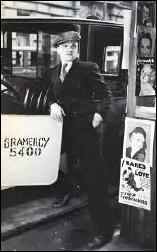
TAXI! Warner Brothers, 1932. James Cagney, Loretta Young, George E. Stone, Guy Kibbee, Leila Bennett, Dorothy Burgess. Screenplay: Kubec Glasmon & John Bright. Director: Roy Del Ruth.
Also in the film is a cameo by George Raft (as the winner of a dance contest; Cagney outsteps him all the way but the dance-hall audience registers its approval for the Raft team). Cagney and his brother (George E. Stone) are taxi drivers caught in a Manhattan taxi war.
Loretta Young is the daughter of “Pops,” a taxi-driver played by Guy Kibbee, murdered by the mob-run opposing taxi company. Cagney believes in fighting, not compromising, and when a truce is arranged, he is outraged and convinced no good will come of it. When his brother is killed, Cagney goes on a one-man vendetta, and it’s a toss up whether his brother’s killer, the police, or his temper will get him first.
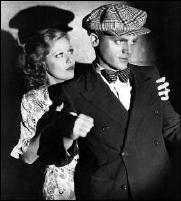
William Everson characterizes this as a “tough, cocky comedy-melodrama.” The comedy is supplied by Young’s waitress friend. Marie, played by Dorothy Burgess. The character’s whine gets a bit tiring after a while, but there is no gainsaying the skill with which Burgess plays this role.
The movie is short (seventy minutes), and Cagney delivers his “you dirty yellow dog” line with an appropriate snarl. All the familiar Cagney mannerisms are used to good effect, and Young has a few moments in which she doesn’t have that plastic look she adopted for most of her career.
A minor Cagney and Warner Brothers melodrama with a weak resolution, but fun, with a very striking opening behind the credits with some jazzy editing to set the big city/taxi war context.
— Reprinted from The MYSTERY FANcier, Vol. 8, No. 4, July-August 1986 (very slightly revised).
Sun 13 Nov 2011
Posted by Steve under
Reviews[4] Comments
TIMOTHY CHILDS – Cold Turkey. Harper & Row, hardcover, 1979. No paperback edition.
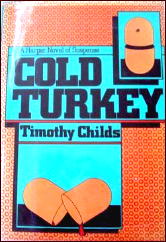
With all the locations in the US to chose from, somehow Los Angeles still comes up Number One in providing the best background possible for the perfect embodiment of the private eye novel.
This case of the stolen barbiturates and the murdered security guard, for example, takes Peter Stokes, a one-armed operative for Cadish Security, on a grand whirlwind tour of the City of Angels, from the most rundown slums to the inner city, to the nude shores of Topanga Beach, then back again to the cheap gaudiness of Sunset Strip, as well as a good many assorted bits of scenery in between.
It therefore seems an unmitigated shame to suggest that hokey incompetent cops like Lt. Farrell are no longer even fractionally believable, no matter how necessary they are in keeping an essential cog of the plot in gear. And if that’s not enough, the identity of the key culprit is a bit of gristle nearly impossible to swallow.
Rating: C plus.
— Reprinted from The MYSTERY FANcier, Vol. 3, No. 6, Nov/Dec 1979 (very slightly revised). This review also appeared earlier in the Hartford Courant.
[UPDATE] 11/13-11. This was the author’s only crime novel, and therefore the only appearance of Peter Stokes, which in spite of my obvious misgivings about the book, I think is too bad. (He’s not even mentioned on Kevin Burton Smith’s Thrilling Detective website.)
Sun 13 Nov 2011
Posted by Steve under
Reviews[9] Comments
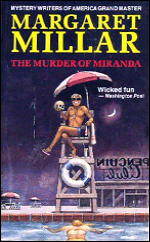
MARGARET MILLAR – The Murder of Miranda. Random House, hardcover, 1979. Paperback reprint: International Polygonics, 1989.
The dust jacket calls this a suspense novel, but as of page 172 the story is still singularly crime-free. This in spite of the fact that the young lawyer Tom Aragon, who also had a prominent role in Millar’s previous novel, Ask for Me Tomorrow, is on hand again to turn in another satisfactory job of detective work.
The intent is instead a devastating attack on the California life style, with the easy target being the slightly wacky members of the terribly exclusive Penguin Beach Club. In truth, though, the delicate line between witty characterization and just plain potty characters is crossed more than once.
The ending, in particular, veers so suddenly from the semi-comical to a harshly bitter irony that only the vaguest sort of loss is the result.
Rating: B.
— Reprinted from The MYSTERY FANcier, Vol. 3, No. 6, Nov/Dec 1979 (very slightly revised). This review also appeared earlier in the Hartford Courant.
[UPDATE] 11-13-11. Series character Tom Aragon appeared in one more novel, Mermaid (Morrow, 1982), which I remember reading, but nothing more than that — which pretty much holds true for this one as well.
Sun 13 Nov 2011
COLLIN WILCOX – Power Plays. Random House, hardcover, 1979. Hardcover reprint: Detective Book Club, 3-in-1 edition, December 1979. No paperback edition.
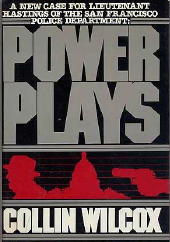
Much to the surprise of everyone involved, an apparently minor traffic accident on the streets of San Francisco unexpectedly coughs up the body of a murder victim.
Found stabbed to death in the back seat of one of the cars is a one-time Washington columnist who in recent days had reportedly been hot on the trail of a surefire comeback story. The trail of the killer leads Lt. Hastings of Homicide on a merry chase as well. Higher and higher he goes into the upper echelons of the rich and powerful on both coasts; at stake is nothing less than his job itself.
A lot of fast-paced action scenes keeps the story’s arteries pumping, leaving little time-out for the usual details of Hastings’ home life. What makes this not the totally successful peek behind closed doors it’s intended to be is a certain naiveness in such matters — and a lack of depth in terms of the muck that’s being raked up.
If it matters, though, Hastings as a character pleases me, and I liked the book anyway.
Rating: B.
— Reprinted from The MYSTERY FANcier, Vol. 3, No. 6, Nov/Dec 1979 (slightly revised).
Bibliographic Data: Collin Wilcox, 1924-1996, wrote a total of 21 Lt. Hastings novels. Power Plays was the 10th in the series. One of the books, Twospot, was a joint venture with Bill Pronzini, with Hastings and Bill’s “Nameless” PI sharing the detective work. In another of the books, Except for the Bones, Wilcox’s other series character, theater director Allan Bernhardt, makes an appearance.
Sat 12 Nov 2011
REVIEWED BY DAN STUMPF:
MYSTERIOUS DR. SATAN [and] THE DRUMS OF FU MANCHU. Both Republic, 1940. Serials: 15 chapters each. Directors: John English & William Witney.
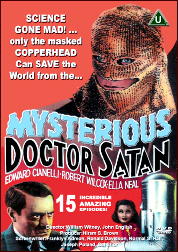
Back in Grade School I used to leaf eagerly through Famous Monsters and Screen Thrills Illustrated, tantalized by stills from old serials filled with costumed heroes, mad doctors, robots, and death rays, chock-full of perils to dazzle my pre-adolescent imagination.
As I grew older, my tastes remained pretty much pre-adolescent, the serials became available on video, and I discovered most of them were about someone trying to conquer the world with two guys and a truck.
That’s true of the later post-war serials, when everyone got a bit tired of it all, but Drums and Satan were made back when somebody cared about giving the kids a thrill, and each is fifteen chapters of constant action, delivered by the able directing team of William Whitney and John English, abetted by Republic’s hyper-kinetic stuntmen.
We get car crashes, plane crashes, robot crashes, leaps from cliffs, daggers, pistols, trapdoors, gloating … everything, in short, that a kid dreams his world will be filled with when he grows up.
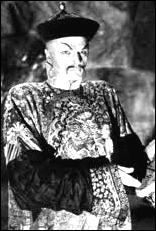
The heroes of these things are your typical stalwart and two-fisted sort, but the eponymous baddies of these two efforts are memorable indeed. Doctor Satan (I guess some folks don’t care what they name their kids) is played by Eduardo Cianelli with the kind of dapper old-world charm you don’t see much in Mad Scientists anymore.
Cianelli is remembered best as the evil religious fanatic (“Kill for the love of killing!”) in Gunga Din, but he was playing suave Gangsters ever since Winterset in 1936, and he wound down his career as an ancient medicine man in the surreally bloated Mackenna’s Gold.
Fu Manchu, in Drums of… is a less showy part, written with stereotyped oriental reserve, but he’s played by Henry Brandon, who was probably the most notable movie villain you never heard of.
Brandon started out in the movies (as Henry Kleinbach) hamming it up as evil Barnaby in Laurel & Hardy’s Babes in Toyland. Before Fu, he did dirty duty in serials like Buck Rogers and Jungle Jim, and afterwards served as the character model for Captain Hook in Disney’s cartoon Peter Pan, but his most critically respected effort is probably his few scenes as Chief Scar in John Ford’s The Searchers.
Fri 11 Nov 2011
A TV Review by MIKE TOONEY:
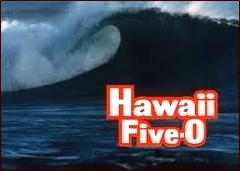
“Over Fifty? Steal.” The original Hawaii Five-O (Season 3, Episode 11, 25 November 1970) and “Odd Man In” (Season 4, Episode 14, 28 December 1971).
Jack Lord (Steve McGarrett), James MacArthur (Dan-O), Zulu (Kono), Kam Fong (Chin Ho), Hume Cronyn (as Lewis Avery Filer), Richard Denning (The Governor), Harry Endo (Che Fong), Jiro Tamiya (Goro Shibata), Lane Bradford (Moose Oakley). Writer: E. Arthur Kean. Directors: Bob Sweeney, Paul Stanley.
Imagine an intelligent, extremely clever “gentleman thief” in the tradition of Raffles and Robin Hood.
Now imagine this thief couldn’t care less about righting wrongs or fighting oppressive government — he just wants the money.
Such is Lewis Avery Filer, a character who appeared in two episodes of the original Hawaii Five-O.
In his first appearance (“Over Fifty? Steal”), Filer is an insurance investigator who has just been forcibly retired, a victim of a corporate takeover.
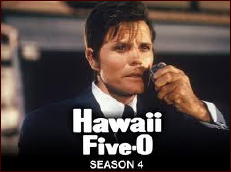
Filer feels he’s been treated shabbily and sets out to exact his revenge. He initiates a series of robberies against the “new boss” that has McGarrett and Co. jumping through hoops trying to track him down.
Unlike most of McGarrett’s foes, Filer eschews violence, using his formidable intelligence to execute his crimes with great precision. At one point, he even confronts McGarrett in the middle of a news conference! Predictably, the media glorify this new “Robin Hood,” much to Five-O’s collective chagrin.
Eventually, Filer slips up, allowing McGarrett to capture him just at the moment of his greatest triumph.
When he next shows up, some time in the next season (“Odd Man In”), Filer is in prison, but he’s overheard something there that prompts him to escape: A $4 million drug money deal is about to go down, and Filer wants it all.
Filer’s target this time isn’t a legitimate corporation but “The Corporation,” Asian drug dealers, and these boys play rough.
Even while McGarrett is in hot pursuit, with Five-O always just one step behind him, the wily Filer plays the mobsters like a violin, knowing that one slip-up would prove instantly fatal. It’s a very dangerous “game” he’s involved in, but Filer is up to the task.
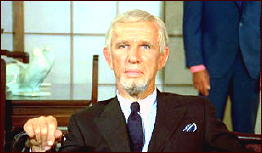
However, can Lewis Avery Filer manage to rob from the rich (the Mob) and give to the poor (Lewis Avery Filer) without getting caught by Steve McGarrett? Need you ask?
Both episodes featured Canadian-born Hume Cronyn (1911-2003), who must have relished playing Filer, transforming into many other characters at will. Cronyn’s first major film role was also memorable, as the snoopy mystery-novel addict in Alfred Hitchcock’s Shadow of a Doubt (1943).
These shows featuring Lewis Avery Filer are a lot of fun, with an unaccustomed sense of humor for this series, and worth your time.
Later on in Season 6, in an episode entitled “30,000 Rooms and I Have the Key” (26 February 1974), David Wayne played a very similar character but with a different name. Since E. Arthur Kean wrote this one too, we could conclude that it was intended as another Filer escapade — but, alas, it was not to be.
Thu 10 Nov 2011
Posted by Steve under
Authors ,
ReviewsNo Comments
THE BACKWARD REVIEWER
William F. Deeck
R. C. WOODTHORPE – Death Wears a Purple Shirt. Doubleday Crime Club, hardcover, 1934. First published in the UK as Silence of a Purple Shirt, Ivor Nicholson & Watson, hardcover, 1934.

Nicholas Slade — “an eminent author whose name was known to everybody, though his works, with one exception, were read by nobody” — is asked by his niece to do what he can to free the niece’s estranged husband from a murder charge. The husband is a member of the Purple Shirts, a fascist organization in England, and the man killed is a high-level member of that group who is up to no good.
Slade is known by one book — the rest being dull satires — The Gods Are Just, which he describes as “an eruption like the pimples on the face of adolescent youth: natural but unpleasant, and best forgotten once they are gone,” and at which he shudders whenever it is mentioned.
He and his cockney, although he doesn’t talk like one, assistant, Alfred Hicks, who spends most of his time reading the articles in John Bull, go to the scene of the crime. The two of them put up at the Island Hotel, a most extraordinary inn with a most extraordinary staff.
There is a great deal of humor in this novel, arising both from the circumstances and the characters. The portrayal of the Purple Shirts should be enough to make any fascist organization blush, assuming it was capable of it.
The publishers say that Nicholas Slade “will inevitably come to occupy a niche in the gallery of immortal detectives of fiction.” Well, we all know what publishers are like, but they had somewhat of a point here. There was, however, only one other novel featuring Slade (ed.–The Necessary Corpse), and two works an immortal do not make.
Still, the potential certainly existed, and any reader who enjoys the classic mystery with humor and interesting characters should find this well worth seeking out.
— From The Poisoned Pen, Vol. 7, No. 1
(Whole #33), Fall-Winter 1987.
Bio-Bibliographic Data: As a mystery writer, Ralph Carter Woodthorpe, 1886-?, was the author of eight detective novels published between 1932 and 1940. Two of these featured Nicholas Slade as the leading character, as Bill pointed out; a former schoolmistress named Mathilda Perks appears in another two. One of these was Death in a Little Town, an early eccentric cozy which Bill reviewed in the same issue of Poisoned Pen. Look for here on this blog soon. (He enjoyed it.)
Thu 10 Nov 2011
REVIEWED BY MICHAEL SHONK:

THE SENTIMENTAL AGENT. ITC Entertainment; ATV Production. September 28, 1963 through December 21, 1963. 13 episodes @60 minutes. Carlos Thompson as Carlos Varela, Burt Kwouk as Chin, Clemence Bettany as Miss Suzy Carter, John Turner as Bill Randall. Executive Producer: Leslie Harris. Producer: Harry Fine.
It is not uncommon for a great series to decline as time goes by, but The Sentimental Agent might hold the record for how fast a great series can turn into one of television’s worst.
The Sentimental Agent began as an episode of another ITC series, Man of the World. The episode entitled “The Sentimental Agent” introduced the character Carlos Barella (Carlos Thompson), owner of an import-export business.
Man of the World featured the adventures of Michael Strait (Craig Stevens), world famous photographer-reporter, as he traveled around the world with his assistant Maggie (Tracy Reed). When Michael was arrested in Cuba, Maggie goes to Carlos for help. The story focused on Carlos as the series regulars spent most of their time off screen.
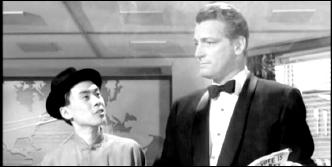
The episode was one of Man of the World’s best and led to the character Carlos getting his own weekly series. Carlos Barella became Carlos Varela, owner of Mercury International import-export business. He moved to London and lived in a fancy office-home above the company’s warehouse.
His staff was introduced. Chin, Carlos’ Chinese servant, had endless contacts (cousins), enjoyed gambling on horse races, and ruled with absolute power over what clothes Carlos wore. Miss Carter was the usual loyal pretty young efficient secretary. The interaction between the three characters added to the series charm.
The highlight of the series was Carlos Thompson’s portrayal of Varela. Carlos had the charm to con anyone including the viewers. Varela was entertainingly too perfect. He knew everything and everyone. Confident, irresistible to beautiful women, he was always one step ahead of everyone else. He avoided violence, preferring to outsmart his opponents.
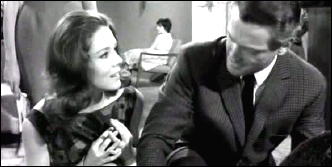
Each week Carlos would be in a different part of the world on business only to be caught in the middle of danger and intrigue. The writers made creative use of Carlos’ occupation. Stories ranged from Cold War spy plots (“Express Delivery”) to adventures in exotic lands (“Scroll of Islam”). The series worked best featuring the light escapism of such episodes as “May the Saints Preserve Us.”
In that episode, future Monty Python’s Flying Circus favorite female, Carol Cleveland played a young beautiful headstrong heiress from Texas who wanted Mercury International to ship her Northern Ireland ancestral castle to her home in Texas. The story used the expected twists as MacGuffins, action that bordered on the silly, and dialog full of humor.
Even in the beginning the series had its flaws. Stock footage filling in for the exotic locale of the week was overused and obvious. Direction was average. And a warning, after repeated listening, the theme music “Carlos’ Theme” can get stuck in your head and refuse to leave.
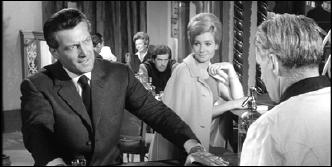
Reportedly, ratings were not as good as expected, but far worse was the alleged problems with the star. Carlos Thompson’s performance was near perfect, yet it is claimed the Spanish-speaking actor had problems with his English. Thompson lasted eight episodes (plus the final episode in perhaps the worst use of stock footage in television’s history).
Replacing Thompson was John Turner as Bill Randall. The storyline had Randall filling in for the absent Varela who was away on business and no doubt having more entertaining adventures than the ones Randall had. The audience suffered through five episodes featuring Bill Randall. He was the complete opposite of Carlos. Randall was a dull, clueless, average looking Englishman. It was as if they had replaced James Bond with Felix Leiter.
The switch of leads was rushed and clumsy. It wasn’t until the final episode, “A Box of Tricks” written by story editor Ian Stuart Black, that the character of Randall, and how Chin should fit in, was finally figured out. The episode also gave all the characters a happy ending.
A special treat of watching old television shows is seeing future stars. “A Very Desirable Plot” written by Brian Clemens (The Avengers) featured the first television appearance of Diana Rigg.
The Sentimental Agent is worth watching. The Carlos Thompson episodes are entertaining, at times brilliantly so. But avoid any episode with John Turner, it would just spoil any fond memories you have of this series.
SOURCES:
Cineology.
Double O Section. (Warning to spoiler-phobics. This review has spoilers.)
Note: A DVD set (Pal Only) of the 13-episode season has been released, but NetworkDVD.net no longer carries it. A five minute clip from an episode called “The Beneficiary” can be seen here on YouTube.
Wed 9 Nov 2011
THE SERIES CHARACTERS FROM
DETECTIVE FICTION WEEKLY
by MONTE HERRIDGE
#8. CANDID JONES, by Richard Sale.
The series discussed this time is the Candid Jones series, created by Richard B. Sale and running from 1937-41. Sale had five other series running in Detective Fiction Weekly at one time or another: Daffy Dill, Captain McGrail, Casey Mason, John the Cobra, and Owl-Eye Venner. So Sale’s stories, from this evidence, seem to have been popular with the readers.
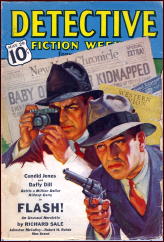
The Daffy Dill and Candid Jones stories often were given covers for their issues. The very first Candid Jones story rated a special cover featuring Jones himself with his camera and gun. Daffy Dill describes Candid Jones in a later story: “He was a pretty big fellow, kind of homely, his face filled with freckles, his hair shiny as bright copper. … He had a strong jaw and clean eyes. … There was an air about him that meant Business with a capital B.†(Flash!)
The stories give a little background about Candid Jones and how he wound up as a photographer. His real first name is Terrence, and the Candid nickname was given to him because of his candid personality. He is a hardboiled character, and had quite a fearsome reputation as an investigator.
Jones started out being an investigator for an unnamed private detective firm, then after a year of learning the ropes, got a job with the Apex Insurance Company, on “the gumshoe trail of stolen gems and insurance chiselers.†(Make Way for a Dagger)
Photography was his hobby at that time, and he began selling some of his pictures. He eventually decided to make a business of his hobby and went into business for himself, after resigning in 1932 from his insurance job of thirteen years. His background as an investigator helps him when he gets involved in mysteries, and his success brings more cases.
His beginnings as a private investigator are seen in a flashback in the story “One Herring — Very Redâ€, in which he investigates the murder of a friend and mentor of his from that time period. At the end of this story he agrees to work for Apex Insurance Company on special assignments, otherwise he works on his photography jobs. And in another story, we learn of a previous marriage when he investigates a homicide and clears his ex-wife.
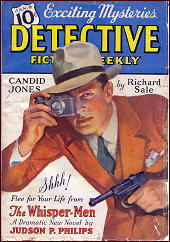
Regarding his hardboiled reputation, Jones admits that maybe he was: “I was never afraid of any man, and I always figured that if a guy was going to get rough with you, the best thing to do was to get rough with him first.†(Long Shot) He also notes that “Bluff is great stuff and so is a front. It goes a long way.†(Murder on the Film)
However, he noted, eventually you have to use your fists or bullets if it becomes necessary. Another of Sales’ characters, on the other hand, Daffy Dill, is not really a hardboiled character but always carries a gun because he deals with criminals and crimes regularly. Dill is a much easier going person.
Many series have a policeman as friend or antagonist to the main character, and this series has one. Inspector Harry Rentano is a friend of Candid Jones, and sometimes invites him along on his official investigations. Rentano is also available for any assistance Candid Jones may need on investigations he starts.
Rentano first met Candid Jones during the time Jones worked as an insurance investigator. He used to be on the police Bomb Squad, and worked on some Mafia cases. He is currently head of the Homicide bureau, and was known as a policeman more interested in knowing the truth about a case than in making an important arrest to impress people. He is married with four children.
The third member of the cast in the stories is Jones’ girlfriend, Claire Crossman. She is a model from the Frazier Agency, “and outside of being my favorite model, she’s about my favorite girl-friend too.†(Banshee) She often does not appear in a very prominent role in the stories, unlike Dinah Mason in the Daffy Dill series.
Candid Jones has two items he seems to carry with him everywhere. One is a camera, often a Leica, Model G. The other is his gun, a German 9mm Luger. He does not say where he picked up this weapon, but it is possible he is a war veteran.
One occasion where Jones used a different camera is in the story “You Can’t Print That!†where he takes an entire strip of twenty-four exposures with a robot camera that automatically takes the photographs and advances the film for the next exposure. It came in handy for the murder he witnessed, and left his other hand free to use his gun on the murderer.
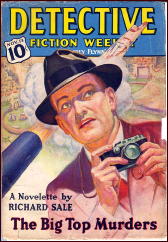
Jones uses his gun frequently in the stories, and in his own words, “I’ve got to admit I never had any scruples about killing a man. … I don’t like to kill … But when it’s my life against a rat’s.†(Murder on the Film) His camera saved his life on one occasion, when a bullet struck it rather than him. (The Big Top Murders)
To get an idea of the sort of crimes that Candid Jones becomes involved in investigating, a short survey of some of the stories is in order. “Long Shotâ€, the first story, involves an attempt to fix a horse race. It is a very violent story, and probably the most hardboiled of the series.
In “You Can’t Print That!†Jones witnesses a murder that is connected to the trial of a racketeer, and takes some photographs for his first newspaper job. In “Backstage†Jones makes a bet with Inspector Rentano that he can catch a double murderer by the next day. This one takes place at the local zoological park.
In “Banshee†Inspector Rentano asks Jones for help on the question of a banshee at the city aquarium, and gets involved with some criminals. In “Make Way for a Dagger†Inspector Rentano asks Jones along on a murder investigation aboard a yacht in the Hudson River, where the weapon is a harpoon.
In two of the stories Daffy Dill costars with Candid Jones: “Flash!†and “Death of a Glamor Girl.†Both characters appeared on the cover of “Flash!â€, thus promoting both series. Daffy Dill also makes a brief appearance in “You Can’t Print That!â€
At the time of the story “You Can’t Print That!†Jones had acquired a staff photographer position on the Chronicle newspaper at the salary of a thousand dollars a month, but he stated in “Banshee†that he had given up that position because there was “Too much of a sameness. I was getting rich without working. I’m on my own again.â€
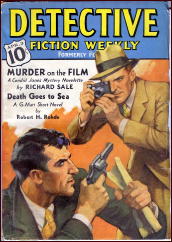
Photographs play an important part in the stories in the series, often revealing clues and serving as evidence of crimes. Jones’ photograph studio is on Fifth near Forty-Fifth Street. The studio is evidently well-equipped, having been set up for modeling sessions that Jones photographs, plus an excellent darkroom for developing film.
Jones works not only in black-and-white film but also does color prints, which is “a technical sort of job, involving separation of color values in the negatives and then dyes.†(Backstage)
There was an extended gap between the last two stories. The last story, “Delayed Action†in 1941, explained that some changes had taken place since the previous group of stories. Jones noted that it had been almost a year since he had been involved in any crime cases, and he intended to continue that way.
However, in this story he becomes involved in a crime case, and willingly so. He also notes that Claire Crossman has married someone else, so that romance is off. Candid Jones’ ex-wife plays a part in the story, and he protects her from the criminals. Inspector Rentano is mentioned in this story, but does not appear in it.
The series is worthy of being reprinted. Although not quite as numerous and popular as the Daffy Dill series, it is a good hardboiled detective series worth reading. One advantage to writing these series overviews is being able to reread the stories, especially the better ones like Candid Jones.
The Candid Jones series by Richard Sale:
Long Shot January 9, 1937
Neat But Not Gaudy January 30, 1937
Murder on the Film April 3, 1937
One Herring — Very Red May 1, 1937
Flash! May 29, 1937
The Camera Kills July 31, 1937
You Can’t Print That! August 21, 1937
Gaff! October 30, 1937
The Big Top Murders November 13, 1937
Back Stage January 15, 1938
Banshee April 9, 1938
Make Way for a Dagger August 27, 1938
Pictures in the Dark December 10, 1938
Torio Had a Friend March 25, 1939
Death of a Glamor Girl April 8, 1939
The Mother Goose Murders May 27, 1939
Tip Your Hat August 26, 1939
Someday I’ll Get You November 18, 1939
Delayed Action June 14, 1941
Previously in this series:
1. SHAMUS MAGUIRE, by Stanley Day.
2. HAPPY McGONIGLE, by Paul Allenby.
3. ARTY BEELE, by Ruth & Alexander Wilson.
4. COLIN HAIG, by H. Bedford-Jones.
5. SECRET AGENT GEORGE DEVRITE, by Tom Curry.
6. BATTLE McKIM, by Edward Parrish Ware.
7. TUG NORTON by Edward Parrish Ware.
« Previous Page — Next Page »


